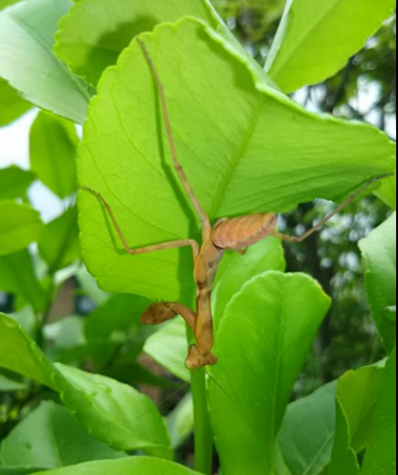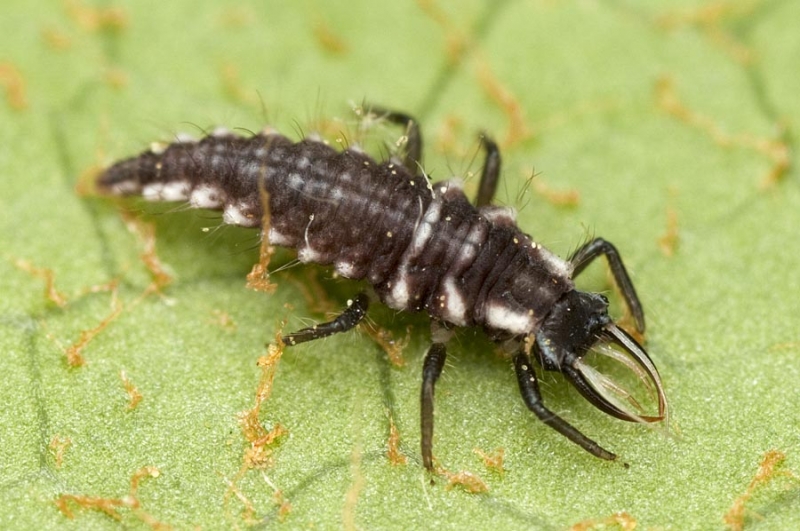⑫ The pruning of the lemon
👉 Purpose of pruning
Pruning is to cut branches and arrange the shape of wood.
a Make the tree compact.
b Improve sunshine and ventilation,
Reduce pest damage.
c Make the fruits easy to attach the following year.
There are effects such as.
Citrus tree is strong against pruning, it seems that there is hardly anything to wither even if it fails a bit, so let's try hard and challenge!
👉 Pruning lemon Suitable period · · · February - March
The suitable period of pruning is from late February to late March where the growth of branches and leaves becomes moderate and the influence of cold is also less.
a. Reduce the spread of trees.
If you want to reduce the height of the tree and the spread to the side and want to make it compact, decide the rough shape of the tree and cut the thick branch with a saw etc. When tailoring the lemon tree to the shape of "Hensokushukankei", pruning will be done after the fourth year and the core will be stopped.
When suppressing the height of a tree, cutting a long branch halfway, a longer branch will occur the following year. So it is important to cut branches at the bifurcation, so do not cut branches in the middle.
Also, it is important to cut all the parts where the branches are divided. If you do not cut off everything from the branches(leave a branch a little), the leftover part withers and its deadness may spread to the trunk as well.
Attention should also be paid to the amount of cutting branches. By pruning once a year, if you lower suddenly the tree height, only the thick and long branches are generated from the vicinity of the cut in the following year. Also, it will be difficult for fruits to grow for several years. So, the height to be devalued in one year will be about 50 cm and will be gradually lowered by the 2 to 3 year plan.
b. Cut out unnecessary branches
☝① When "Reduce the spread of trees" is over, next time you cut off unnecessary branches. However, if too much branches are reduced, fruits will not be easy to produce in that year, and many long and thick branches will occur in the pruned year. Also, be careful as fruits may become difficult to produce after the following year. The upper limit is to cut off 10% to 30% of the entire branches, so that the leaves touch lightly.
At this time, it is necessary to cut branches that are not likely to have fruit preferentially in the pruned year. Branches where fruits were born in that year, and summer and autumn branches tend to have less fruit, so cut those branches preferentially. Branches that do not have traces of fruit within the spring branch will be left preferentially.
c. Cut the tip of a long branch
Choose only long branches (over 25 cm) out of the branches left after the processing of ① to ② above, and cut out about ⅓ of the tip. Cutting produces many branches of moderate length in the spring of the pruned year. The reason for cutting only long branches is that long branches longer than 25 cm use most of nutrition for branch growth, so flower buds do not attach much. Cutting produces a rich branch and fruits will be grown the following year.
Conversely, if you cut too long the tip of a branch that has not grown long, the fruit will not be available in the pruned year. Citrus flower buds grow only near the tip of a branch. So be careful when cutting branches too long, a lot of flower buds will disappear.
👉 Characteristics of spring branch, summer branch, autumn branch
and Pruning in summer
Citrus branches are roughly divided into spring branches extending in March and June, summer branches extending from June to August, and autumn branches extending from August to October. Fruit is attached to the spring branch in that year. Even branches that did not attach are useful because the following year they will bloom and fruits will be attached. Because summer branches are easy to grow long, only a few flowers / fruits will be formed even in the next spring. The autumn branches do not bloom almost as they grow more poorly than the summer branches.
Both the summer branch and autumn branch are unnecessary, so cut out from the base at the same time as it occurs as much as possible.
(Pruning in summer)
It is difficult to distinguish spring branch, summer branch, autumn branch in pruning time of March, and experience is necessary. Please be aware that summer branches grow to more than 25 cm and cross sections of summer branches and autumn branches tend to be triangles.
👉 After pruning, apply a fusion accelerator
When the above ① ~ ③ work is finished, apply a fusion accelerator to the incision. It prevents branches from withering due to pruning, and also prevents intrusion of pathogenic bacteria. (You may paint while cutting) The fusion accelerator is a pasty liquid in which a disinfectant has been kneaded. The fusion accelerator is applied, it gradually solidifies when it touches the air.
If you can not get it by all means, you can substitut
e woodworking adhesive (bond etc). If it is difficult to apply to all the cuts, it is good to preferentially paint on the part where the diameter of the incision is 1 cm or more.
*It is hard to take when a fusion accelerator adheres to clothing etc, so be careful not to touch it
until it solidifies!
I pruned in October.
That article is「I tried pruning!」.
An article which is summarizing pruning articles and updating is
「To improve the fruit of next year!」.
⑬ Cold measures
Lemon is weak against cold. Below minus 3 degrees, branches and leaves begin to wither, and it seems that sometimes it dies. Especially young trees less than 3rd grade are vulnerable to cold, so we will take sufficient cold measures.
👉 Measures against cold of lemon in the garden
A lemon in the garden, as trees grow big it will take time and effort to deal with cold. It is better to grow in an area that does not fall below minus 3 degrees or to grow with potted plants. However, if the lowest temperature of the place of residence is close to minus 3 degrees Celsius or if severe cold waves come only for that year, we will take measures against the cold.
a.Mulch the surface of the soil with 'straw' etc.
b.Wrap lemon trees with nonwoven fabric or the like.
c.Tie nonwoven fabric and the like with a string and fix.
d.If you are raising overwintering fruit, put a fruit bag on the fruit.
By the way, I checked the lowest temperature in Osaka.
| November 2016 | 6.4℃ |
| December 2016 | 1.6℃ |
| January 2017 | -0.8℃ |
| February 2017 | -0.6℃ |
| March 2017 | 1.8℃ |
However, there are some differences depending on the data.
👉 Measures against cold of potted lemon
Potted lemon can move, so let's move the place inside a sunny room. However, when putting it on the outdoor or veranda because it can not move indoors. And when the lowest temperature is likely to be -3 degrees, we will take measures against the cold as shown below.
a.Put pots in a large pot two times larger than
that pot and put the soil between the bowl
and the bowl. This soil is for keeping warm
so you can use garden soil etc. Make it into
a double bowl state.
b.As for the part of the tree, like a garden
planting, wind it with a white nonwoven fabric.
The cloth is white more easy to pass sunlight.
After winding the nonwoven fabric etc.,
ties it with a string and fix it.
c.Even with this countermeasure, only 2 to 3
degrees of heat retention effect can be expected.
So, when the lowest temperature falls by more
than 5 degrees from minus 3 degrees, it seems
better to put potted plants inside.
👉 The verification article on the measures against cold,here!!
⑭ Lemon cultivation and insects
The orchard that is cultivating lemon without using pesticide, has the following points as a point of success.
a.Use of blurred fertilizer
b.Give EM fungus
c.Use of beneficial insects
d.Light pruning and fertilizing
If you do not use pesticides, they will be hit by pests or get sick. So, increase the number of good bacteria in the soil and leaves to reduce bad bacteria and reduce diseases etc. And we will use insects. It seems to be a way of having good insects eat bad insects (disinfect).
Even 3 - ③ soil / fertilizer (EM fungus) of blog, I will explain this part. We are also verifying the effectiveness of EM bacteria. However, regarding the use of beneficial insects, my lemon cultivation is not house cultivation, so even if I capture beneficial insects, it will escape, so there are also difficult parts of using beneficial insects. I will keep an eye on the beneficial insects that have gathered with nature and I want to see the effect. I will introduce "insects and living things" who visited our family at the category "insect and creature" of my blog.
<A lot of profitable insects>
<
span style="font-size:16px;">・ Ladybug


Ladybugs eat aphids. Ladybugs seems to eat 5 aphids in a day. Besides, there is also description that ladybugs also eat a coccoidea. However, even if it is said to be a ladybug, it seems to be a variety of carnivorous ladybugs, herbivorous ladybugs, and fungistrophic ladybugs that eat fungi. Herbivorous Ladybugs seem to be positioned as insect pests on the contrary. Also, ladybugs are not only adults, larvae are also beneficial insects. The larvae also eat a coccoidea and others.
・ Mantis


Mantis eats a variety of insect pests, such as larvae of swallowtail butterfly, bell moth, aphids, coccoidea and mites. The mantis is a lifetime of several months after becoming an adult, and also the range of action is not so wide since it is several meters even if it often flew. Even my garden has laid eggs and will appear every year, so it may appear even if you leave a mantis alone when it appears once. In China, more than 1.8 million mantises were released and experimented "Mantis farming method" ...
・ larvaes of green lacewing
Prey on aphids.

・ Hover fly(Adults and larvae)
Prey on aphids.


・ Spider Eat anything.

・ Tree frog Beneficiaries and pests are also eaten.

・ Pillbug
Eat anything on the soil. It eats everything and decomposes,
so it seems that the state with many pillbugs is a good condition.

・ Earwigs
Earwigs eat pests falling on the ground.

It is hard to find and capture beneficial insects. Therefore, there seems to be a way to plant herbs attracting beneficial insects together. There seems to be various herbs favoring beneficial insects such as nastatium for ladybugs, dill for spiders and green lacewings, lemon balm and coriander for bees.